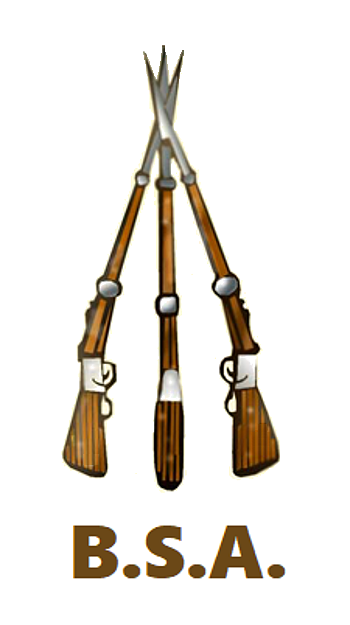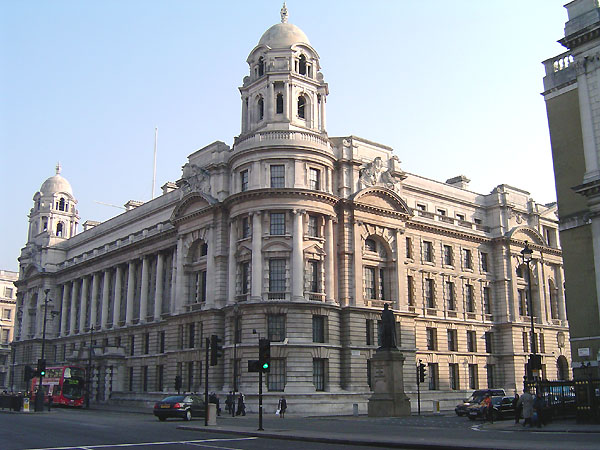|
Birmingham Small Arms Company
The Birmingham Small Arms Company Limited (BSA) was a major British industrial combine, a group of businesses manufacturing military and sporting firearms; bicycles; motorcycles; cars; buses and bodies; steel; iron castings; hand tool, hand, power tool, power, and machine tool, machine tools; coal cleaning and handling plants; sintered metals; and hard chrome process. After the Second World War, BSA did not manage its business well, and a government-organised rescue operation in 1973 led to a takeover of such operations as it still owned. Those few that survived this process disappeared into the ownership of other businesses. History of the BSA industrial group Machine-made guns BSA began in June 1861 in the Gun Quarter, Birmingham, England. It was formed by a group of fourteen gunsmith members of the Birmingham Small Arms Trade Association specifically to manufacture guns by machinery. They were encouraged to do this by the War Office which gave the BSA gunsmiths free access ... [...More Info...] [...Related Items...] OR: [Wikipedia] [Google] [Baidu] |
BSA Cars
BSA cars were manufactured between 1907 and 1912 in Birmingham then until 1939 in Coventry as well as Birmingham, England. Birmingham Small Arms, BSA had established a motor-car department in an unsuccessful effort to make use of the Sparkbrook Birmingham factory. An independent part of the same site was occupied by Lanchester Motor Company, The Lanchester Motor Company Limited. Sales were handled by BSA Cycles Limited. After 1912, manufacture was carried out by group subsidiary Daimler Company, Daimler in Coventry or BSA Cycles in Birmingham. History The first prototype car was produced in 1907. The following year, marketed under BSA Cycles Ltd, the company sold 150 automobiles and again began producing complete bicycles on its own account. By 1909, it was clear that the new motorcar department was unsuccessful, an investigation committee reporting to the BSA Board on the many failures of its management and their poor organization of production. Daimler Dudley Docker had joined ... [...More Info...] [...Related Items...] OR: [Wikipedia] [Google] [Baidu] |
Interchangeable Parts
Interchangeable parts are parts (wikt:component#Noun, components) that are identical for practical purposes. They are made to specifications that ensure that they are so nearly identical that they will fit into any assembly of the same type. One such part can freely replace another, without any custom fitting, such as File (tool), filing. This interchangeability allows easy assembly of new devices, and easier repair of existing devices, while minimizing both the time and skill required of the person doing the assembly or repair. The concept of interchangeability was crucial to the introduction of the assembly line at the beginning of the 20th century, and has become an important element of some modern manufacturing but is missing from other important industries. Interchangeability of parts was achieved by combining a number of innovations and improvements in machining operations and the invention of several machine tools, such as the Henry Maudslay#Lathe design, slide rest lathe ... [...More Info...] [...Related Items...] OR: [Wikipedia] [Google] [Baidu] |
Enfield Town
Enfield is a large town in north London, England, north of Charing Cross. It had a population of 333,587 in 2021. It includes the areas of Botany Bay, Brimsdown, Bulls Cross, Bullsmoor, Bush Hill Park, Clay Hill, Crews Hill, Enfield Highway, Enfield Lock, Enfield Town, Enfield Wash, Forty Hill, Freezywater, Gordon Hill, Grange Park, Hadley Wood, Ponders End, and World's End. South of the Hertfordshire border and M25 motorway, it borders Waltham Cross to the north, Winchmore Hill and Edmonton to the south, Chingford and Waltham Abbey, across the River Lea, to the east and north-east, with Cockfosters, Monken Hadley and Oakwood to the west. Historically an ancient parish in the Edmonton Hundred of Middlesex, it was granted urban district status in 1894 and municipal borough status in 1955. In 1965, it merged with the municipal boroughs of Southgate and Edmonton to create the London Borough of Enfield, a local government district of Greater London, of which E ... [...More Info...] [...Related Items...] OR: [Wikipedia] [Google] [Baidu] |
Royal Small Arms Factory
The Royal Small Arms Factory (RSAF), also known by the metonym ''Enfield'', was a UK government-owned rifle factory in Enfield, adjoining the Lee Navigation in the Lea Valley. Some parts were in Waltham Abbey. The factory produced British military rifles, muskets and swords from 1816. It closed in 1988, but some of its work was transferred to other sites. The factory designed and manufactured many famous British Army weapons including the Lee–Enfield rifles which were standard equipment during both World Wars. History The RSAF had its origins in a short-lived Royal Manufactory of Small Arms established in Lewisham in 1807. The site in Lewisham was a mill where armour had been made since the fourteenth century. Following its purchase by Henry VIII in 1530, it became known as the Royal Armoury Mills and served his armoury in Greenwich. During the Napoleonic War, the increasing demand for large quantities of reliable weapons prompted the Board of Ordnance to look into bu ... [...More Info...] [...Related Items...] OR: [Wikipedia] [Google] [Baidu] |
Board Of Ordnance
The Board of Ordnance was a British government body. Established in the Tudor period, it had its headquarters in the Tower of London. Its primary responsibilities were 'to act as custodian of the lands, depots and forts required for the defence of the realm and its overseas possessions, and as the supplier of munitions and equipment to both the Army and the Navy'. The Board also maintained and directed the Artillery and Engineer corps, which it founded in the 18th century. By the 19th century, the Board of Ordnance was second in size only to HM Treasury among government departments. The Board lasted until 1855, at which point (tarnished by poor performance in supplying the Army in Crimean War, Crimea) it was disbanded. Origins of the Board The introduction of gunpowder to Europe led to innovations in offensive weapons, such as cannon, and defences, such as fortifications. From the 1320s a member of the Royal Households of the United Kingdom, Royal Household, the 'Keeper of the Pr ... [...More Info...] [...Related Items...] OR: [Wikipedia] [Google] [Baidu] |
War Office
The War Office has referred to several British government organisations throughout history, all relating to the army. It was a department of the British Government responsible for the administration of the British Army between 1857 and 1964, at which point its functions were transferred to the new Ministry of Defence (United Kingdom), Ministry of Defence (MoD). This article contains text from this source, which is available under th Open Government Licence v3.0 © Crown copyright It was equivalent to the Admiralty (United Kingdom), Admiralty at that time, which was responsible for the Royal Navy (RN), and (much later) the Air Ministry, which oversaw the Royal Air Force (RAF). The name 'Old War Office' is also given to the former home of the department, located at the junction of Horse Guards Avenue and Whitehall in central London. The landmark building was sold on 1 March 2016 by HM Government for more than British pound, £350 million, on a 250-year lease for conversion int ... [...More Info...] [...Related Items...] OR: [Wikipedia] [Google] [Baidu] |
Sintered
Sintering or frittage is the process of compacting and forming a solid mass of material by pressure or heat without melting it to the point of liquefaction. Sintering happens as part of a manufacturing process used with metals, ceramics, plastics, and other materials. The atoms/molecules in the sintered material diffuse across the boundaries of the particles, fusing the particles together and creating a solid piece. Since the sintering temperature does not have to reach the melting point of the material, sintering is often chosen as the shaping process for materials with extremely high melting points, such as tungsten and molybdenum. The study of sintering in metallurgical powder-related processes is known as powder metallurgy. An example of sintering can be observed when ice cubes in a glass of water adhere to each other, which is driven by the temperature difference between the water and the ice. Examples of pressure-driven sintering are the compacting of snowfall to a gl ... [...More Info...] [...Related Items...] OR: [Wikipedia] [Google] [Baidu] |
Machine Tool
A machine tool is a machine for handling or machining metal or other rigid materials, usually by cutting, Boring (manufacturing), boring, grinding (abrasive cutting), grinding, shearing, or other forms of deformations. Machine tools employ some sort of tool that does the cutting or shaping. All machine tools have some means of constraining the workpiece and provide a guided movement of the parts of the machine. Thus, the relative movement between the workpiece and the cutting tool (which is called the toolpath) is controlled or constrained by the machine to at least some extent, rather than being entirely "offhand" or "wikt:freehand#Adjective, freehand". It is a power-driven metal cutting machine which assists in managing the needed relative motion between cutting tool and the job that changes the size and shape of the job material. The precise definition of the term ''machine tool'' varies among users. While all machine tools are "machines that help people to make things", not a ... [...More Info...] [...Related Items...] OR: [Wikipedia] [Google] [Baidu] |
Power Tool
A power tool is a tool that is actuator, actuated by an additional engine, power source and mechanism (engineering), mechanism other than the solely manual labour, manual labor used with hand tools. The most common types of power tools use electric motors. Internal combustion engines and compressed air are also commonly used. Tools directly driven by working animal, animal power are not generally considered power tools. Power tools can produce large amounts of particulates, including ultrafine particles. Airborne particulate matter is a Group 1 carcinogen. Uses Power tools are used in industry, in construction, in renovation, in the garden, for Homemaking, housework tasks such as Outline of food preparation#Food preparation techniques, cooking, housekeeping, cleaning, and Do it yourself, around the house for purposes of driving (fasteners), drilling, saw, cutting, shaping, sander, sanding, Grinding (abrasive cutting), grinding, router (woodworking), routing, polishing, painting, me ... [...More Info...] [...Related Items...] OR: [Wikipedia] [Google] [Baidu] |
Hand Tool
A hand tool is any tool that is powered manual labour, by hand rather than a motor. Categories of hand tools include wrenches, pliers, cutter (other), cutters, File (tool), files, hammer, striking tools, chisel, struck or hammered tools, screwdriver, screwdrivers, vises, clamp (tool), clamps, snips, hacksaws, drills, and knives. Outdoor tools such as garden forks, pruning shears, and Rake (tool), rakes are additional forms of hand tools. Portable power tools are not hand tools. History Hand tools have been used by humans since the Stone Age, when stone tools were used for hammering and cutting. During the Bronze Age, tools were made by casting alloys of copper and tin. Bronze tools were sharper and harder than those made of stone. During the Iron Age iron replaced bronze, and tools became even stronger and more durable. The Ancient Rome, Romans developed tools during this period which are similar to those being produced today. After the Industrial Revolution, most tools ... [...More Info...] [...Related Items...] OR: [Wikipedia] [Google] [Baidu] |







